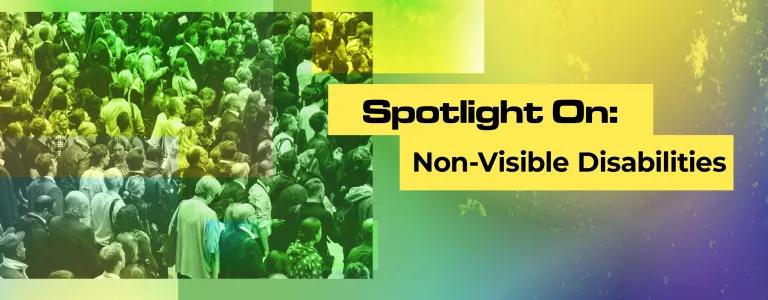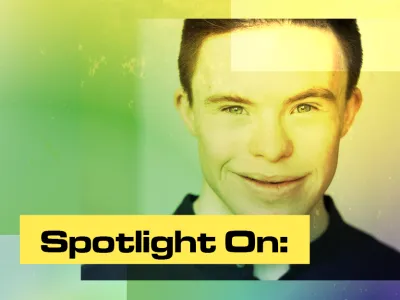
Spotlight On: Non-visible Disabilities
Include this article in your Skills Builder Journal. It could help you develop... ![]()

We’re back with another installment of our Spotlight On series, and today we’re talking about non-visible disabilities - what they are and why awareness is important.
What is a non-visible disability?
Disabilities occur in many different forms. Some people have disabilities that are outwardly visible to others, and others will experience disabilities that have no (or little) outwardly visible signs. This is what is meant by non-visible disabilities.
These disabilities have previously been called invisible disabilities or hidden disabilities, however, the Disabled Persons Transport Advisory Committee (DPTAC) have standardised the term non-visible after people had concerns that; invisible disability implied that the disability was in the person’s head and didn’t really exist; and hidden disability implied that people were purposefully hiding their disability.
What disabilities are non-visible?
It’s important to remember that there is no strict line between visible and non-visible disabilities, and that sometimes people experience a combination of both - for example, a person in a wheelchair may also have a mental health condition.
The most common non-visible disabilities include: mental health conditions like anxiety, depression, schizophrenia, and obsessive compulsive disorder; autism and Asperger’s syndrome; visual impairments or restricted vision; hearing loss; sensory and processing difficulties; cognitive impairments including dementia, traumatic brain injury or learning disabilities; and conditions such as diabetes, or chronic pain.
Why is it important to know about non-visible disabilities?
They’re more common than you might think. In the UK, one in five people has a disability, with 80% of those having a non-visible disability.
Living with a non-visible disability can make daily life more demanding for many people. They affect each person in different ways and can be painful, exhausting, and isolating. And, without visible evidence, it is more often than not harder for other people to acknowledge and therefore offer sympathy and understanding.
Remember that those with non-visible disabilities want to be believed, if and when they choose to talk about their disability, and to be treated with the same respect and dignity as the general population. Not everyone will choose to tell you that they have a disability, or explain what it is. And some people may wear a badge or a lanyard to show they have a non-visible disability and need extra time or help in certain situations.
How can we raise awareness?
The more people talk about non-visible disabilities, the more people will understand them. So raising awareness can come from word of mouth, or through campaigning, sharing information on social media, or reaching out to charities.
Listening to disabled people and hearing their stories, wants, and needs is also a good way to learn more about how visible, and non-visible disabilities impact people’s lives, and what could be done to help improve them.



